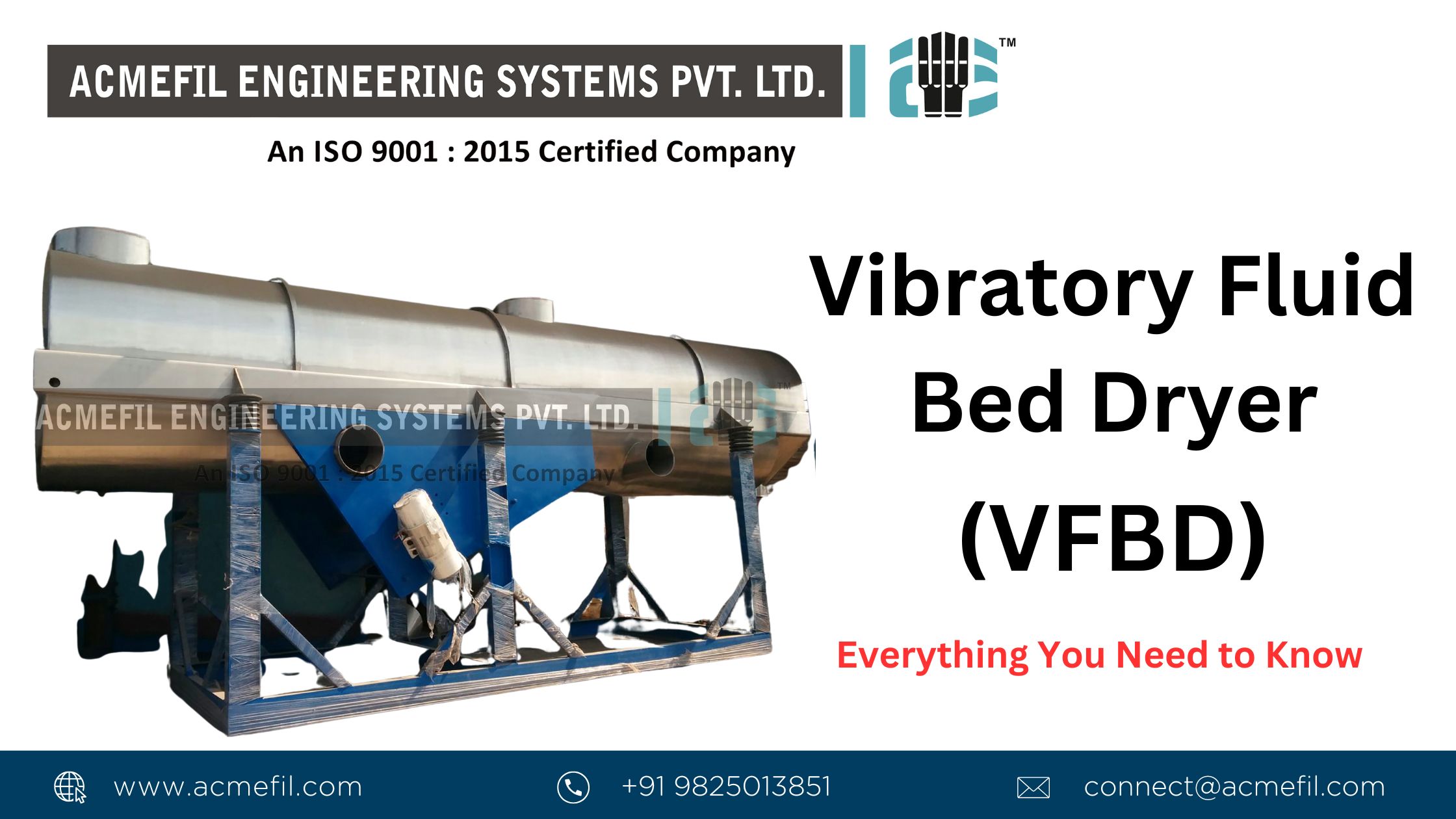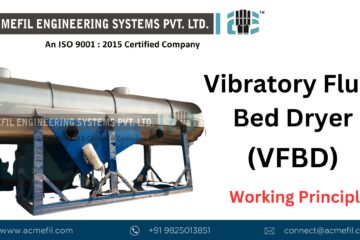When it comes to industrial drying processes, efficiency and precision are critical. The Vibratory Fluid Bed Dryer (VFBD) stands out as a game-changing solution, widely recognized for its ability to handle various materials while ensuring high performance and energy efficiency. Whether you are in the pharmaceutical, food, or chemical industry, understanding the workings, benefits, and applications of VFBD can help you make informed decisions.
This comprehensive guide explores everything about VFBD—how it works, its advantages, its applications, and why it is an indispensable tool for industries aiming to achieve top-tier drying efficiency.
Table of Contents
What Is a Vibratory Fluid Bed Dryer?
The Vibratory Fluid Bed Dryer (VFBD) is a specialized industrial drying system designed to dry granular or powder materials by fluidizing them using controlled airflow and vibrations. It combines the principles of fluidization and mechanical vibrations to optimize the drying process.
How Does a Vibratory Fluid Bed Dryer Work?
1. Material Loading
The process begins with feeding the material into the VFBD. The materials are evenly distributed on the perforated bed, ensuring uniform exposure to airflow.
2. Fluidization
High-velocity air is introduced through the perforated plate, causing the particles to become suspended or “fluidized.” This promotes optimal heat and mass transfer, which is essential for efficient drying.
3. Vibration Mechanism
Simultaneously, mechanical vibrations are applied to the bed. This ensures the material moves continuously across the dryer, preventing clumping and enabling uniform drying.
4. Moisture Evaporation
As the hot air flows through the fluidized material, it evaporates moisture from the particles. The moisture-laden air exits the system through a built-in exhaust.
5. Discharge
The dried material is finally discharged from the outlet, and ready for further processing or packaging.
Key Components of a VFBD
- Perforated Bed: Supports the material while allowing airflow.
- Air Distribution System: Ensures consistent airflow for uniform drying.
- Vibratory Motors: Generate controlled vibrations to enhance material movement.
- Exhaust System: Removes moisture-laden air from the system.
- Heating System: Provides the necessary thermal energy for drying.
Advantages of Using a Vibratory Fluid Bed Dryer
1. Uniform Drying
VFBD ensures consistent drying by combining fluidization and vibrations, eliminating the risk of uneven moisture distribution.
2. Energy Efficiency
By optimizing airflow and heat transfer, VFBD significantly reduces energy consumption compared to conventional drying systems.
3. Reduced Downtime
The simple design and minimal moving parts make VFBDs easier to maintain, reducing downtime and operational costs.
4. Versatility
Suitable for drying a wide range of materials, from powders to granules, across multiple industries.
5. Scalability
VFBDs are available in various sizes, making them ideal for both small-scale and large-scale industrial applications.
Applications of VFBD
1. Pharmaceutical Industry
- Drying of granules in tablet production.
- Preparation of active pharmaceutical ingredients (APIs).
2. Food Processing
- Drying of food grains, cereals, and snacks.
- Processing of powdered beverages and spices.
3. Chemical Industry
- Drying of bulk chemicals and fertilizers.
- Treatment of polymer resins.
4. Mineral Processing
- Drying of sand, limestone, and other minerals.
5. Environmental Applications
- Drying of sludge from wastewater treatment plants.
Comparing VFBD with Other Dryers
| Feature | VFBD | Rotary Dryer | Spray Dryer |
|---|---|---|---|
| Efficiency | High | Moderate | High |
| Material Handling | Powders and granules | Bulky and coarse materials | Liquids and fine powders |
| Energy Use | Optimized for energy savings | High | Moderate |
| Scalability | Excellent | Limited | Excellent |
Tips for Optimizing VFBD Performance
- Proper Material Feeding: Ensure uniform loading for consistent drying.
- Adjust Airflow: Optimize airflow speed to maintain efficient fluidization.
- Vibration Calibration: Regularly check and adjust vibration settings to avoid clumping.
- Preventive Maintenance: Schedule regular inspections to minimize downtime.
Why Choose VFBD for Your Industry?
1. Enhanced Product Quality
VFBD ensures minimal degradation of materials, preserving their physical and chemical properties.
2. Sustainability
The energy-efficient design of VFBD aligns with modern sustainability goals, reducing overall environmental impact.
3. Customizability
With a variety of design options, VFBDs can be tailored to specific industrial needs.
4. Proven Reliability
Industries worldwide trust VFBDs for their durability and consistent performance.
Incorporating VFBD into Your Workflow
Step 1: Assess Your Drying Needs
Evaluate the type and volume of material you need to process.
Step 2: Consult Experts
Work with experienced manufacturers to customize the VFBD to your requirements.
Step 3: Train Your Team
Ensure your staff is well-trained to operate and maintain the VFBD efficiently.
Step 4: Monitor Performance
Continuously monitor key performance metrics and make necessary adjustments.
Conclusion
The Vibratory Fluid Bed Dryer (VFBD) is more than just a drying solution—it’s a game-changer for industries aiming to achieve superior product quality, energy efficiency, and operational excellence. Its versatility and proven performance make it a preferred choice across multiple sectors.


